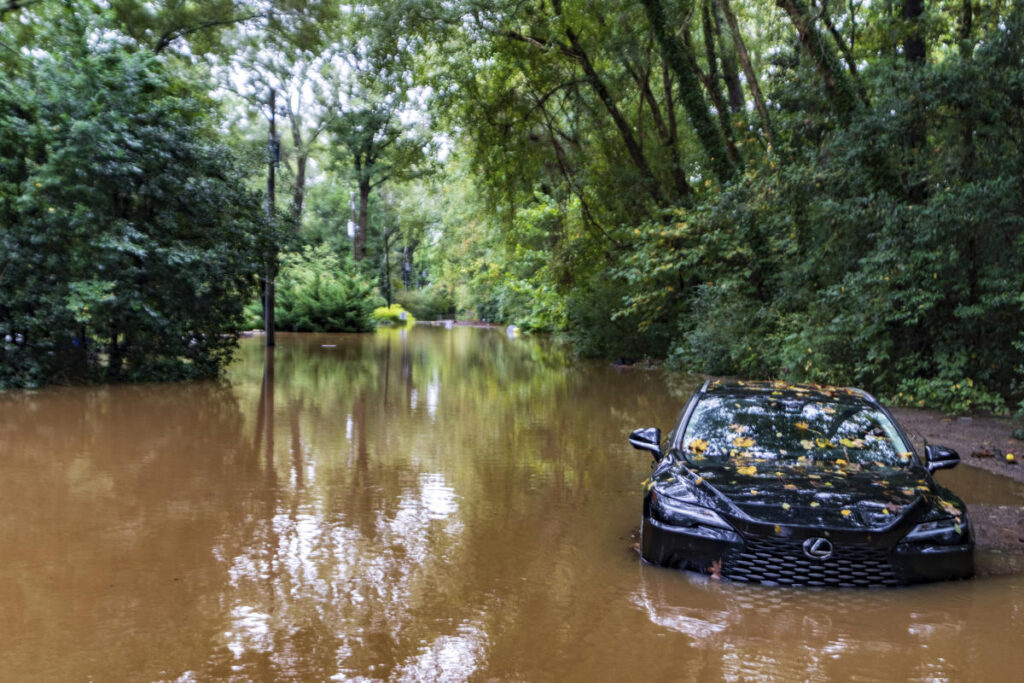Hurricane Helene wreaked havoc along its 600-mile path, causing extensive damage to numerous communities. If you find yourself grappling with the aftermath of this storm or other extreme weather events, an important consideration is whether your automobile insurance policy covers flood damage. Generally, auto insurance will cover storm-related damages, including flooding, but this is contingent upon possessing comprehensive coverage. This article outlines how comprehensive auto insurance operates and provides guidance on filing a claim for flood damage with your insurance provider.
Understanding the various types of car insurance is crucial for any vehicle owner. Typically, these coverages can be categorized into mandatory types, such as liability coverage (required by most states) that addresses bodily injury and property damage, and optional types, like comprehensive and collision coverage. Comprehensive coverage is especially relevant in the context of natural disasters, as it provides financial protection against damage or destruction caused by storms, vandalism, or theft. While this type of insurance is often not required unless you have a financed vehicle, many lenders insist on it for their protection.
Comprehensive auto insurance generally covers water damage resulting from flooding, including damage to critical vehicle components such as the engine, electrical system, and transmission. It also addresses various consequences of water exposure, such as mold growth or rust. However, it’s important to note that not all forms of water damage are covered; instances where damage results from negligence—like leaving windows open during a storm—may not be reimbursed. Knowing the specifics of what your policy covers and the importance of maintaining comprehensive coverage can save you financial distress during an unexpected disaster.
If your vehicle has incurred flood damage from Hurricane Helene or similar weather events, knowing how to navigate the claim process is essential. Start by promptly contacting your insurance provider to report the damage, ensuring you document everything by taking photographs and videos. Avoid driving the car until it has been thoroughly inspected, as even if it seems operable, flood damage can be severe, particularly for electric or hybrid vehicles. It’s also beneficial to become familiar with your insurance policy while waiting for an adjuster to assess the situation, noting details such as coverage limits and deductibles, which will influence your out-of-pocket expenses.
When filing for damages, an insurance adjuster will follow up to evaluate the vehicle’s condition and authorizes repairs based on inspection details. If the adjuster concludes that repairs are feasible, you can choose a repair shop, with the insurer providing payment thereafter, minus your deductible. However, there’s a chance that if the car is deemed irreparable, the insurer will classify it as totaled based on the actual cash value rather than replacement cost, which can often result in less favorable financial restitution for the vehicle owner.
It’s advisable not to wait until a storm is imminent to acquire comprehensive coverage. Insurance can’t be retroactively enforced, which means any damage occurring prior to obtaining or enhancing coverage with comprehensive terms may leave you without recourse. Insurance companies usually impose binding restrictions that prevent policy changes shortly before expected storms, as a measure against sudden and large-scale claims. An ideal practice would be to assess your current insurance needs regularly, especially in light of the potential for natural disasters. Evaluating factors such as your vehicle’s worth, your capacity to manage deductibles, and your financial situation concerning a potential car replacement can guide beneficial modifications to your policy.
To conclude, understanding your auto insurance coverage—particularly comprehensive insurance—is vital when facing natural disasters and their aftermaths. Comprehensive coverage is essential for protecting against flood damages, and while other types of insurance cover varying aspects of incidents, comprehensive insurance uniquely addresses conditions like flooding. If considering policy adjustments or enhancements, especially after adverse weather, it’s prudent to think about your individual circumstances, the potential need for additional coverage like rental reimbursement, and the overall adequacy of your current policy.

